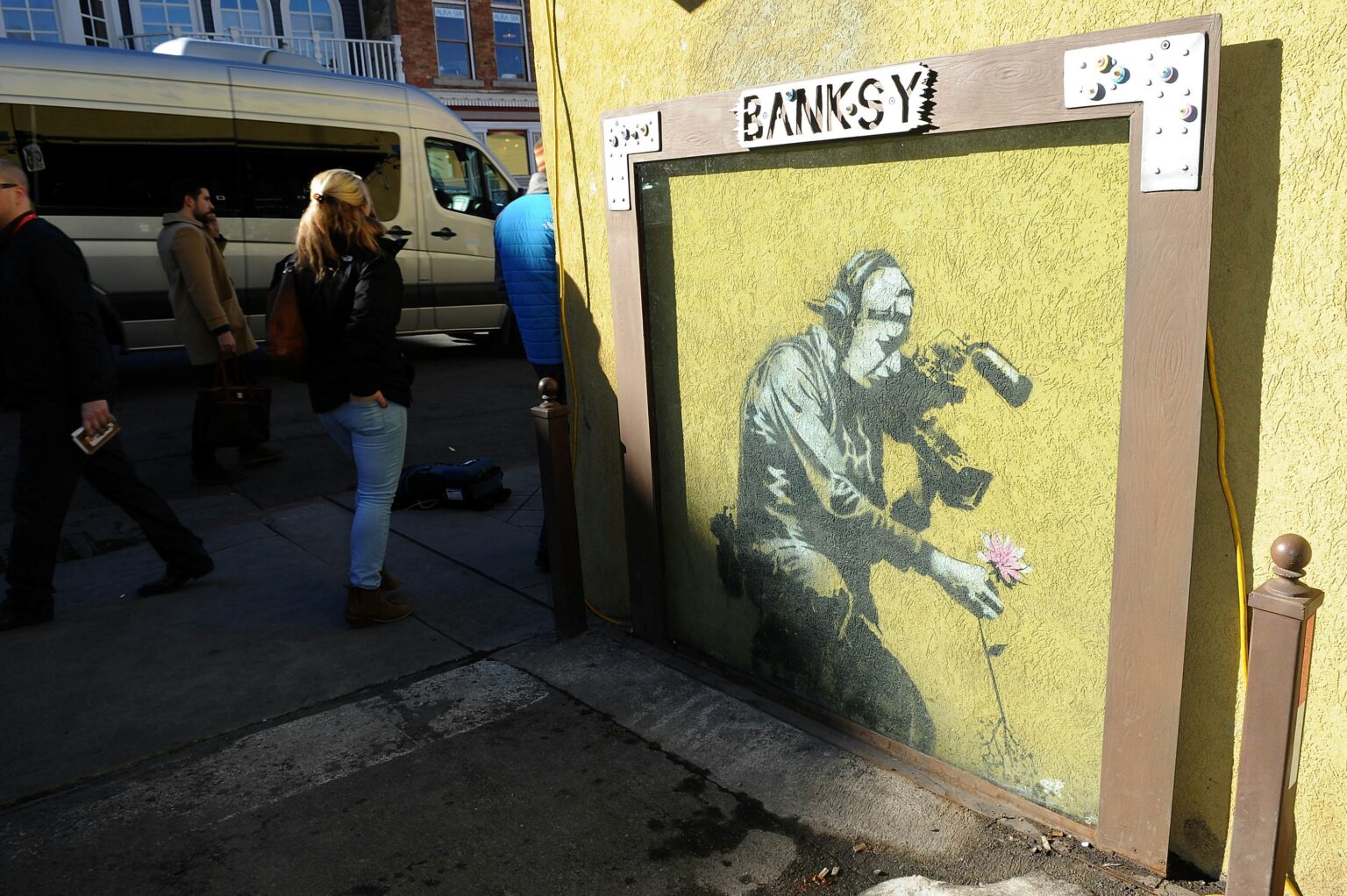Exploring the Hidden World of Banksy: A Guide to His Surviving Works Across America
Locating Banksy’s clandestine creations remains a formidable challenge, akin to unraveling the mystery surrounding his true identity. As one of the most iconic and controversial figures in contemporary street response-to-ukrainian-refugee-crisis/” title=”Understanding Europe’s … to Ukrainian Refugee Crisis”>art, Banksy’s works are both celebrated and targeted. The moment a new piece is publicly attributed to him, it often becomes a magnet for vandalism or defacement by other street artists, making preservation difficult. Consequently, much of Banksy’s original art has been lost to time, with only a handful of pieces still visible behind protective barriers such as plexiglass or fences designed to deter damage and unauthorized access. For those eager to glimpse Banksy’s work firsthand, here’s a curated overview of his surviving murals and installations across the United States, along with insights into their current state of preservation.
San Francisco: The Last Remnants of a Street Art Legend
Once home to at least six confirmed Banksy pieces, San Francisco now hosts only a solitary original work. The Mission District, renowned for its vibrant murals and eclectic street art scene, is where you can find Banksy’s “Bird Singing in Tree.” This piece, located at the corner of Erie and Mission Streets, near Cafe Prague, features a minimalist depiction of a tree trunk with a bird perched on it, accompanied by a horn emitting chirping sounds. Originally, this was the sole artwork on that building, but over the years, the neighborhood has transformed into a sprawling canvas for numerous artists, creating a dense forest of murals that now overshadow Banksy’s contribution.
Park City, Utah: Preservation Through Community Effort
In Park City, Utah, local residents have played a pivotal role in safeguarding Banksy’s legacy. All three of his known works in the area have been meticulously preserved: one was removed for safekeeping, another was immediately covered to prevent vandalism, and a third was restored after suffering extensive defacement. Both publicly accessible pieces are situated along Main Street, making them easy to visit. The first, “Praying Boy,” located at 537 Main Street, depicts a young boy kneeling with a pink halo and angel wings-an image that was nearly obliterated but was carefully restored and now protected behind clear plexiglass with informative plaques. The second, “Camera Man and Flower,” at 402 Main Street, shows a man pulling a flower from a pocket to capture the perfect shot, symbolizing the intersection of art and voyeurism. These works are framed with wood and accompanied by plaques to emphasize their cultural significance.
New Orleans: Art as a Response to Natural Disasters
In 2008, to mark the third anniversary of Hurricane Katrina, Banksy created a series of provocative artworks in New Orleans, primarily critiquing governmental response and disaster management. Today, only two of these pieces remain visible, both protected due to their placement on buildings less affected by subsequent hurricanes. The most accessible is “Umbrella Girl,” situated at the corner of St. Claude Avenue and Kerlerec Street, near the lively French Quarter. It portrays a girl shielding herself from a torrential downpour with an umbrella, symbolizing resilience amid chaos. At the opposite end of the city, in the Central Business District, “Graffiti Eradicator” can be found at Clio and Carondelet Streets. This piece features a satirical character-an artist erasing graffiti-highlighting themes of censorship and societal control.
New York City: The Decline of a Street Art Hub
Once a thriving hub for Banksy’s work, New York City now offers only a few confirmed pieces. The most prominent is “Hammer Boy,” located on Manhattan’s Upper West Side. This mural depicts a young boy wielding a large hammer, poised next to a red fire hydrant, protected behind a sheet of plexiglass to prevent vandalism. In Brooklyn, two additional works remain, both near an abandoned gas station at the corner of Coney Island Avenue and Avenue I in Midwood. One shows a seal balancing a ball on its nose, replacing a former sign, while the other depicts a suited man with a hard hat holding a red line graph, interpreted by many as a commentary on gentrification and urban change. These pieces exemplify Banksy’s continued engagement with social issues, even in a city where his presence has diminished.
Los Angeles: A City of Hidden Art Gems
Los Angeles, known for its sprawling street art scene, still hosts two of Banksy’s works if you know where to look. The first, “PARKING,” is located in downtown LA near South Broadway and West 9th Street. It features a girl swinging from the “A” in the word “Park,” symbolizing freedom and movement. Originally overlooking a parking lot, it now resides in a narrow alleyway between buildings, adding an element of surprise for passersby. The second piece, “Selfie Stick,” situated near the historic Chinese Theatre on North La Brea Avenue, depicts a couple in souvenir T-shirts holding a selfie stick attached to a security camera. This piece offers a satirical take on modern obsession with self-portraits and surveillance, reflecting LA’s celebrity culture and social media obsession.
Additional Resources for Street Art Enthusiasts
- Discover the top destinations to experience Chihuly’s stunning glass sculptures across America.
- Explore the legendary works of Remington, the cowboy artist, and where to find his iconic pieces nationwide.

